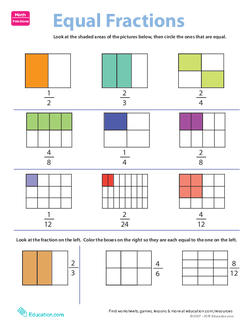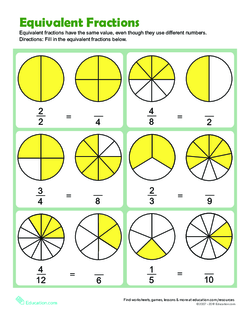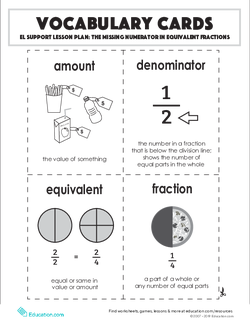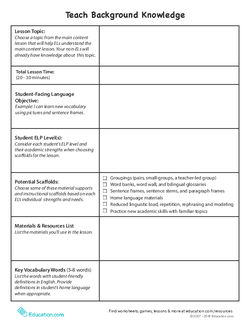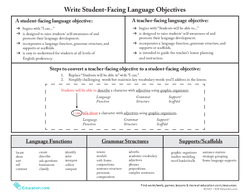- Worksheets
- Games
- Lesson Plans
- Workbooks
- Exercises
- Science Projects
- Skills Progression
- More
You are here:
Lesson Plan
The Missing Numerator in Equivalent Fractions
Are these fractions really equal? Use this lesson to introduce the concept of equivalent fractions with your students. Teach this on its own or use it as support for the lesson Equivalent Fractions Using Area Models.
Download lesson planGrade
Subject
View aligned standards
Objectives
Academic
Students will be able to create equivalent fractions by multiplying by different fraction forms of one whole and draft an accompanying area model.
Language
Students will be able to find the missing numerator in an equivalent fraction using visual aids and peer interaction.
Introduction
(5 minutes)- Draw a pizza on the board and tell students that you are very hungry today and would like to eat half of the pizza. Call on a student to come up and draw how much of the pizza you will eat (they should draw a line to divide the pizza in two halves and shade in one half of the pizza). Label it as 1/2 and emphasize that you plan on eating a fraction of the pizza known as one-half.
- Tell students that you decided to eat the same amount of pizza (one-half) but in slices that are more manageable to hold. Ask for students' ideas on what you could do to achieve the goal of eating half the pizza but in smaller pieces (e.g., cut the half in half or split the pizza into fourths). Jot down students' responses on the board and affirm that an excellent option would be to cut the pizza into 4 pieces and eat 2 of the pieces. Draw another pizza, ask a student to divide it into 4 pieces, and have them shade in 2 of the 4 pieces.
- Have students turn to a partner and state their observations of the two shaded in pizzas and how they are similar or different using these sentence stems: "The two pizzas are similar in that..." and "The two pizzas are different in that..."
- Invite a few students to share their responses and guide them to the understanding that the second pizza shows the same amount as the first pizza. Explain that the second pizza should be labeled 2/4 and that essentially 2/4 is the same or equivalent as 1/2. They are equivalent fractions. Tell students that today they will become familiar with equivalent fractions by practicing talking about these types of fractions.
